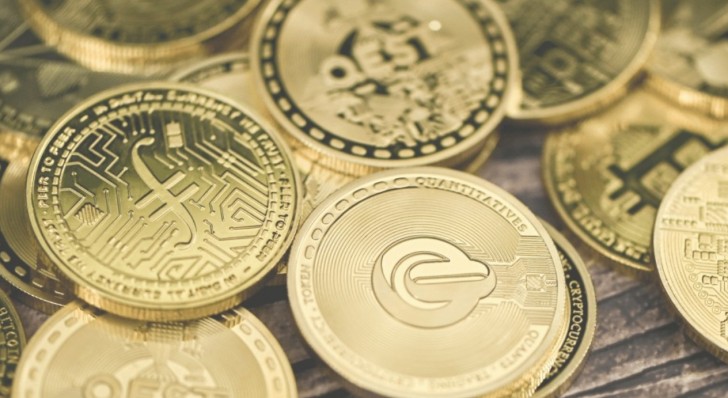Why diversification matters in crypto investing
Diversification is an age-old investing principle: A well-rounded portfolio can help soften market downturns and improve long-term growth potential. This rule not only applies to the traditional world of assets like stocks and bonds, but to the world of cryptocurrencies as well, perhaps even more so. The crypto market is known for its volatility, but that volatility doesn’t have to work against you if you know how to spread risk across various assets, including altcoins.
Investors who consolidate their entire crypto holdings into Bitcoin are basically ignoring the thousands of projects with special use cases and technological foundations. Adding altcoins to your holdings provides not only diversification across assets but also brings in the elements of diversification by utility, network activity, and sector focus delivering a much more resilient investment portfolio. Platforms like Cryptogugu can be used to find and get in-depth analysis on these alternative assets and investments.
Top altcoin categories: utility, governance, stablecoins
The word “altcoin” is extremely broad. Understanding how they can fit into a diversified portfolio is made easier by grouping them by their function:
- Utility tokens
Utility tokens provide the holder with access to products or services within a blockchain ecosystem.
- Governance tokens
These governance tokens are the tokens that are used to vote on proposals for a project’s future. For instance: holders of tokens in various protocols can vote on the changes that are made to lending rates, development budgets and upgrades. The ability to participate in decentralized communities, a central trend in crypto’s movement toward DAO (Decentralized Autonomous Organization) models, is enabled through holding these governance tokens.
- Stablecoins
Stablecoins are pegged to fiat currencies and act as a volatility hedge. They're not using these to grow for growth, they're using these for liquidity, risk mitigation and trades on high volatility. Adding some dose of stable coins to your cryptocurrency portfolio can be analogous to parking cash in traditional investment plans — they're the buffer and the bridge.
It's important to know these differences. Where one altcoin may act as a speculative growth asset, another may act as a stable counterweight or governance tool. This inner diversity is why altcoins are a good place to boot up your strategic allocation.
How to research and compare altcoins
When it comes to altcoins, due diligence is absolutely necessary. With more than 10,000 coins across exchanges now, knowing where to look and how to determine what projects are legit is crucial.
The whitepaper is a good place to start — the project’s blueprint. Find clarity in mission, technical feasibility, tokenomics (supply, inflation, vesting schedules), and roadmap milestones. Evaluate the team involved in building the project whether they have experience and previous public exposure and background in the blockchain industry.
Metrics also matter. Take into account market cap, available supply and liquidity . Increased liquidity makes it easier to enter and exit positions. Community backing is also a sign that there’s the capacity for longevity; projects that are resilient and are adopted within the community tend to have a strong and engaged user base as well.
Facilitating the process with tools that simplify access to market statistics, rankings, coin comparisons, and perhaps more importantly, updates. The tool provides new as well as veteran traders a real time estimate on the actual value and potential of altcoins.
Risks and volatility considerations
Altcoins can present opportunity, yes, but they can come with unique risks, too — and quite often risk that is even riskier than that of Bitcoin.
The one that maybe stands out the most that everyone can see is the price volatility. Many altcoins move 20% or more in a day. Even tokens with a lot of promise can fall because of macroeconomic news, a clampdown by regulators or market manipulation.
Security flaws can be no less than ignored. Others have vulnerabilities in their smart contracts that hackers take advantage of.
The risk from regulations is also important. Though Bitcoin is generally viewed as a commodity in some nations like the US, the same cannot be said for altcoins. And with the SEC’s lawsuits against Ripple and other projects, investors have been reminded that swift legal action may cause a coin to be frozen or removed from exchanges overnight.
This is why altcoin diversification needs to go hand in hand with diversified risk management: cold storage, audit reports, keeping up with regulatory news, and split allocations, viewing everything from a position of conviction, and caution.
Building a long-term altcoin strategy
Forget chasing short-term profits; think for the long term. A good altcoin strategy consists of:
- Asset allocation: Create a ratio — perhaps 60% major altcoins , 20% small caps with growth potential, and 20% stablecoins.
- Rebalancing: The market shifts fast. What’s 20% of your portfolio today may balloon to 40% tomorrow. Revisit allocations quarterly.
- Thematic investing: You might focus on sectors based on macro trends. As blockchain matures, themes provide structure and coherence to altcoin exposure.
- Dollar-cost averaging (DCA): Instead of lump-sum investing, gradually build positions to reduce exposure to volatility.
Ultimately, a long-term altcoin strategy needs to align with your investing goals, appetite for risk, and fascination with new tech. When you hold these altcoins, you are not just betting on price — you are betting on the future of the decentralized world.
 Editorial staff
Editorial staff

 Editorial staff
Editorial staff


